When it comes to emergency food supplies a lot of people think military-style MREs are the gold standard. They do have some advantages – they’re rugged, easy to prepare and can be eaten cold in a pinch – but they have drawbacks too. They’re not designed with food intolerances or other special dietary needs in mind. They don’t always taste great. And, to get good ones with a lot of life left, you can end up spending a lot of money.
One way to get the advantages of MREs without the drawbacks is to make your own. This isn’t all that hard, and gives you a lot of options. Military MREs come in a couple of dozen menus, but if you’re making your own the choices are almost infinite.
One meal, or one day?
You can be pretty flexible when it comes to making your own MREs. There are a few basic approaches, but you can mix and match them to tailor your rations exactly the way you want them to be.
First, how do you want to break things down? The US Army approach is to have one pack for each meal. That keeps the individual packs light and compact, and means you can carry only as many meals as you’re going to need.
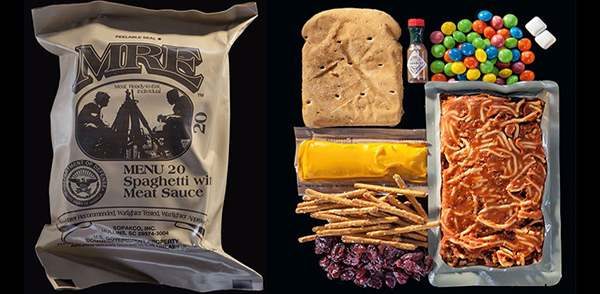
Most other armies do it differently, though. British military rations are a good example. Each pack contains rations for a full 24 hours; there are boil in the bag meals for breakfast and dinner, plus a snack meal – usually crackers and meat spread – for lunch. All extra space is stuffed with chocolate, candy, cookies and drink ingredients. This all comes in a box that’s bigger and heavier than a single MRE, but smaller and lighter than the three MREs that make up a day’s rations.

What you decide depends on how you plan to use your rations. Individual meals give you more flexibility; you can throw one in your pack when you go out hunting, or keep a couple in the car in case you get delayed on a trip. If you’re making multi-day trips on foot you’ll save weight and bulk by opting for 24-hour packs. For ultimate flexibility make some of each!
Picking Your Ingredients
Your next choice is whether you’re going to assemble your MREs out of prepacked items, or pack food yourself. The first method is the quickest and simplest.
Here’s a suggested menu:
Breakfast
- Beans and franks – 8oz can
- Instant oatmeal – 1 packet
- Graham crackers – Single serving packet
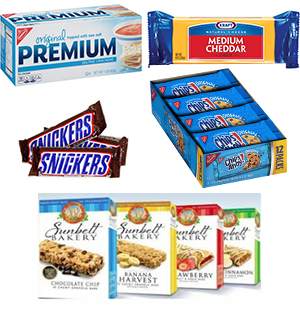 Lunch/Snack
Lunch/Snack
- Saltine crackers – Single serving packet
- Cheese or meat spread – 1oz can
- Candy bar
- Cookies – Single serving packet
- Granola bar
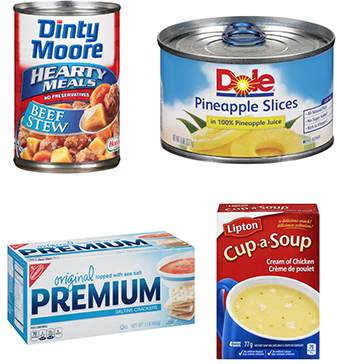 Main meal
Main meal
- Beef stew – 15oz can
- Fruit – 8oz can
- Instant soup – 1 packet
- Saltine crackers – Single serving packet
Sundries pack
- Instant coffee – 4 sachets
- Sugar – 8 sachets
- Powdered creamer – 4 sachets
- Kool-Aid or Crystal Light – 2 sachets
- Gum – 1 pack
- Hard candies – 1oz
- P-38 can opener – x1
- Plastic spoon – x2
- Tissues – 1 pack
- Matches – 1 book
You can pick up all the contents for a ration like that at your local grocery store; all you have to do is pack them in a small box or tough plastic sack, and you have a 24-hour ration. There’s a big drawback though – it’s not exactly lightweight. A pack like this will weigh in at close to four pounds, and if you’re packing a week’s worth of food that will add up in a hurry.
On the bright side you can eat most of it cold and without needing any water to prepare it – a can of cold stew isn’t the most appetizing meal in the world, but it’s a lot better than a bowl of dry mac and cheese. One point – you might be tempted to save weight by buying food in microwaveable bowls instead of cans. Don’t; these are nowhere near sturdy enough, and you’ll just end up with leaking sauce and spoiled food.
Dehydration Wins
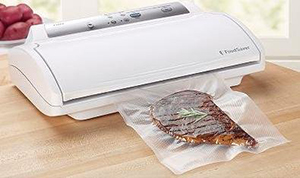 If you want to save weight – and money – as you prepare your MREs you should get yourself a vacuum sealer. These were designed for sealing food for the freezer, but they’re great for packing emergency rations too. Get the heaviest grade bags it will handle – they stand abuse better.
If you want to save weight – and money – as you prepare your MREs you should get yourself a vacuum sealer. These were designed for sealing food for the freezer, but they’re great for packing emergency rations too. Get the heaviest grade bags it will handle – they stand abuse better.
The first thing you can do is save money on your crackers and cookies. Instead of buying expensive single serving packs, just get a regular pack and break it down into single servings – then seal them yourself. For extra protection put all the components of each meal – except for large cans, obviously – in a bag then seal that. This also helps if you want to break down your ration. If all the lunch items are sealed in a bag you can just grab that, take it with you and leave the main meal in camp. You can seal the sundries pack in one unit or spread it through the meals – it’s up to you.
If you want to stick with the “meals” part of MREs, but you’re willing to compromise on the “ready to eat” bit, you can save a lot more weight. As long as you’re sure you’ll have access to water and time to cook, dehydrated foods will massively cut down on weight and bulk.
Related: How to Make Powdered Eggs
What sort of dehydrated foods? You have quite a few choices here. If you have a dehydrator you can make your own dried vegetables. Just about anything can be dehydrated – squash, corn, onions, beans and most other veggies. Dry what you like, divide it into portions and vacuum seal them. To rehydrate them just open the bag, pour in boiling water, stir and leave it to stand. Alternatively, you can empty the bag into a pot and cook it up in there. You can add seasonings or even powdered sauce mix to each portion, too.
With your vacuum sealer you’re free to buy in bulk and break it down into single-meal portions. You can do that with anything from Mountain House dehydrated food to boxes of mac and cheese; breaking bulk will save you a lot of money over buying individual portions. You can create your own meals, too. Seal a portion of dried vegetables, chopped beef jerky and seasonings, add that to a packet of dehydrated carbs – ramen noodles, or instant potato – and seal the whole lot in an outer package. If you’re sealing packets pierce them with a sterile pin first – otherwise they can swell under the vacuum and add useless bulk.
Top Tips
However you decide to make up your MREs, here are a few points to keep in mind:
- Don’t stint the calories. If you’re going to be outdoors and active, aim for at least 4,000 calories a day. It’s better to have too much energy than too little, and in a SHTF scenario the chances of you putting on weight are really not high.
- Seal everything you can. Vacuum sealing will protect your food from a lot of hazards – water, pollution, airborne microorganisms, even nuclear fallout. It also helps extend its shelf life; whatever it says on the packet, your fully sealed MREs should be good for at least three years and probably more like five.
- Balance nutrients. If you’re expecting to survive on packaged rations for more than a few days, make sure the food you include has plenty of fiber and vitamins.
- Include the essentials. If you’re using canned foods include a P-38 folding can opener – even if the cans have ring pulls. Rings can break off, and the last thing you need is to cut yourself trying to lever the top open.
Making your own MREs can be a lot cheaper than buying them, and you also get to avoid any foods you don’t like or can’t eat. It’s also very satisfying to fill your bug out bag with tough, tasty and nutritious ration packs you’ve made yourself. Even if the world’s going to hell, no reason why you shouldn’t eat well along the way.
You may also like:
 Homemade 72 Hour Emergency Food Supply Kits
Homemade 72 Hour Emergency Food Supply Kits
This Bug Will Kill Most of the Americans during the Next Crisis (Video)
10 Awesome Food Ideas for Your Bug Out Bag
50 Tips From the Great Depression
How to Keeps Eggs Fresh for Months with Mineral Oil

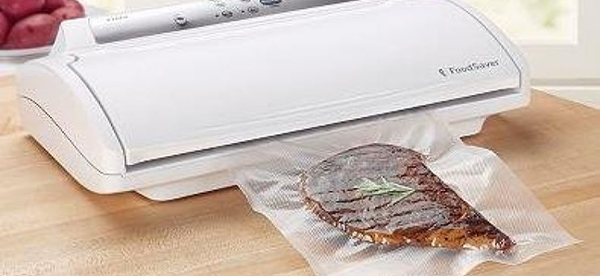










Vacuum sealer sounds like a good idea.
Another handy item to get while there’s still time.
THANK YOU!
If you make the meals yourself, say spaghetti and meat sauce, how does it not go bad? Doesn’t it have to be refrigerated? Does using a vacuum sealer stop it from spoiling? For how long?
I think it is talking about dehydrating anything you put in a seal bag. So you could put some pasta some dried tomatoes, and some dehydrated ground beef. This will make your water needs higher though, and require cooking the pasta. If you use veggies and dried beef then you would not have to re-hydrate or cook, you could simply snack on it. It still increases your water intake compared to a real MRE.
I have a dehydrator and a sealer. LOVE them. Can cook for the whole month in one day and seal in individual packets for easy use.